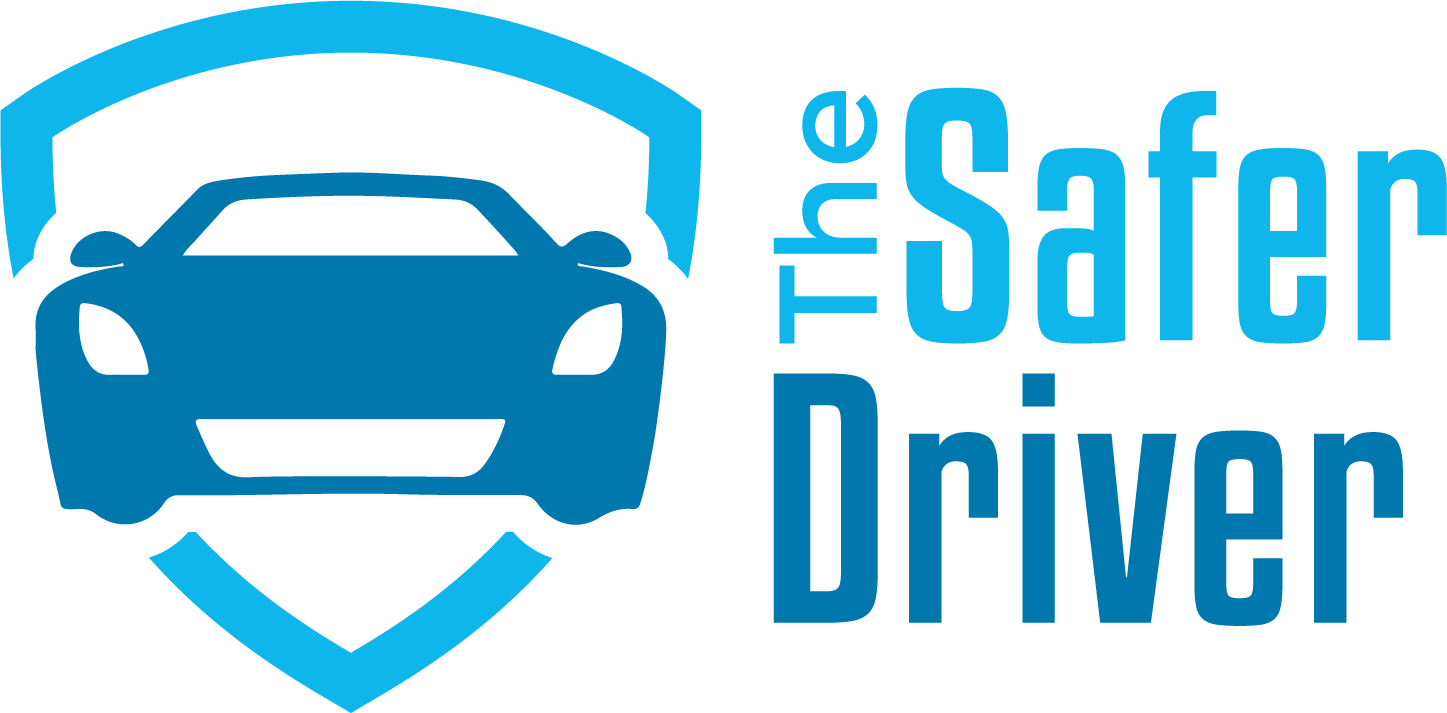Señales de Tráfico y Marcas Viales
Traffic Signs and Road Markings
Road signs use both color and shape to identify its type and purpose. Knowing the colors and shapes of traffic signs is crucial to taking the appropriate actions on the road. Traffic signs are added to roadways to keep you safe. You should obey all posted signs, despite the temptation to ignore certain signs to arrive to your destination faster. As a reminder, your goal should not be to get to your destination as quickly as possible. Instead, you want to arrive safely. Ignoring signs to reach your destination quicker inherently risks driver and passenger safety. Risking safety could lead to an accident, which could result in passenger injuries and will result in a much later arrival time than driving safely.
The meanings of each sign color and shape are shown below.
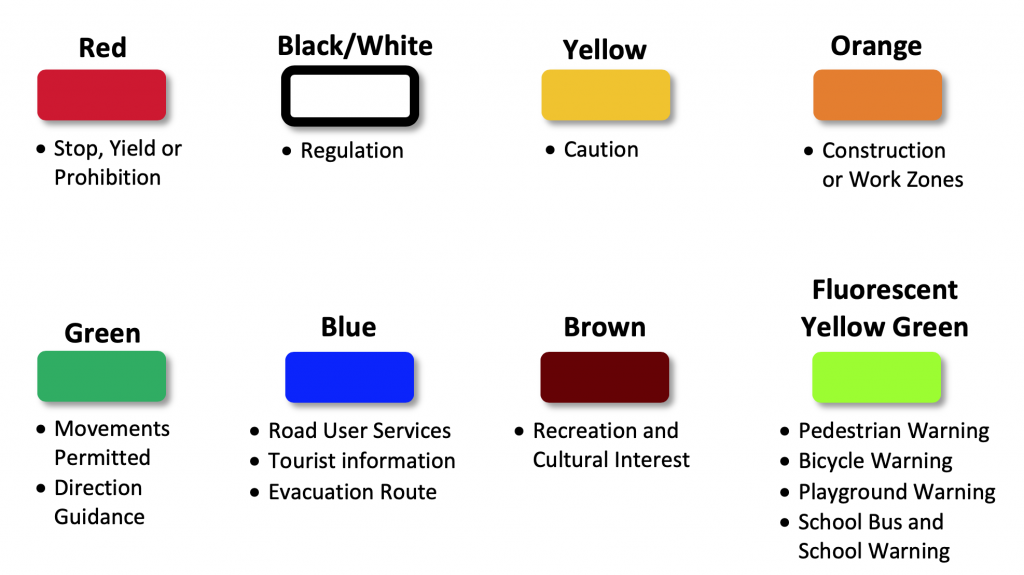
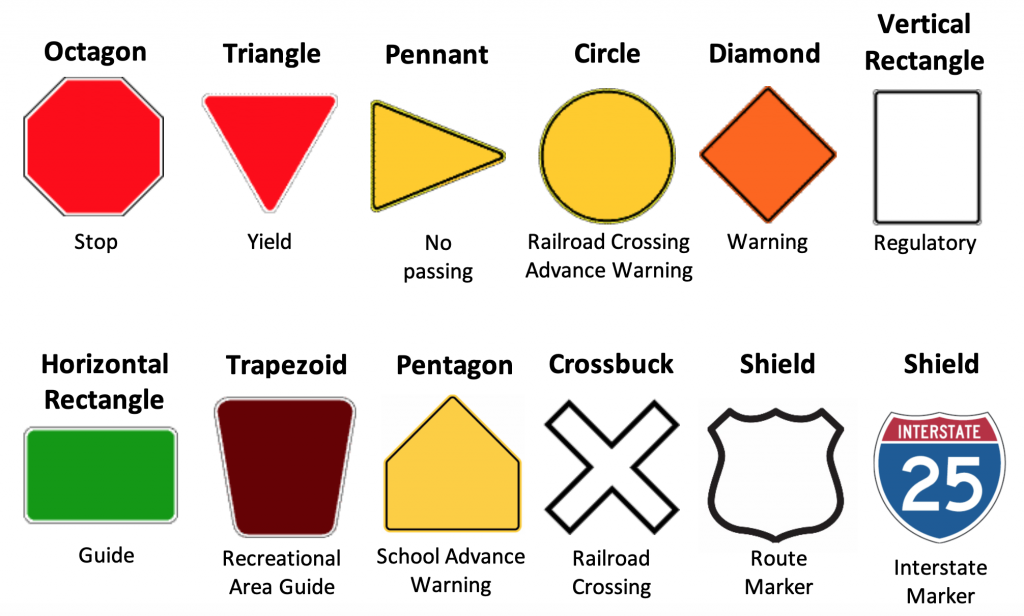
Yield Signs:
- Red and white with red letters.
- Alert drivers to approaching hazards or changes in road conditions.
- Require drivers to:
- Stopif necessary.
- Proceed with cautionwhen safe.
- Be aware of oncoming traffic.
- Flashing yellow lightshave the same meaning as yield signs.
Stop Signs:
- Red with white letters.
- Require drivers to:
- Come to a complete stopbefore the intersection.
- Proceed with cautionwhen safe.
- The limit lineindicates where drivers should stop before proceeding.
- Rolling stops are illegal.
- Flashing red lightshave the same meaning as stop signs.
Traffic Signals:
- Two-way signals:Direct traffic from two directions.
- Turn arrows:Indicate permitted turning directions.
- Red light:Stop behind the limit line before the intersection.
- Yellow light:Prepare to stop as a red light is coming.
- Green light:Proceed with caution, assuming the right of way.
Information from Signs and Markings:
- Yellow signs:Warn of upcoming hazards or road changes.
- Red, black, and white signs (except parking):Regulate traffic.
- Adjust speed in poorly lit conditions.
- Grooved roads:Drive cautiously, similar to driving on sand or gravel.
Lines on Roadways:
- Double yellow lines:
- Legal to cross only for turning into driveways or crossovers when safe and legal.
- Cannot be crossed in other situations.
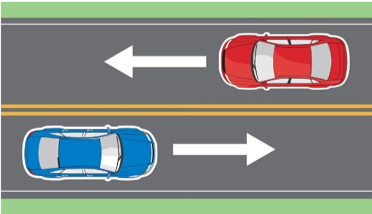
- Single broken lines:
- Yellow: Indicates traffic flowing in two opposite directions.
- White: Indicates traffic flowing in two lanes in the same direction.
- Cross only with caution when legal, safe, and necessary.
- Note that passing is also prohibited when there is a single solid yellow line closest to your lane:
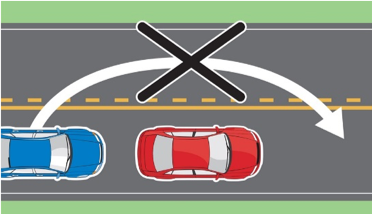
- Limit lines:
- Stop behind the line at intersections with traffic lights or stop signs.
- Use the end of the curb as a reference point if no lines are present.
- Blind intersections:Approach at no more than 15 mph and exercise extreme caution.
Intersections:
- Yield the right of way to vehicles already in the intersection.
Turn Lanes:
- Designated lanes for turning right or left.
- Governed by specific turn arrow lights (red, yellow, green).
Crosswalks:
- Designated areas for pedestrians to cross.
- Stop at marked lines or before entering the intersection if unmarked.
Bicycle Lanes:
- For bicycles only.
- Motor vehicles may not enter except for entering/leaving the highway, turning, or permitted parking.
Passing Lanes:
- Use only when it is safe and prudent, completed quickly, and with good visibility.
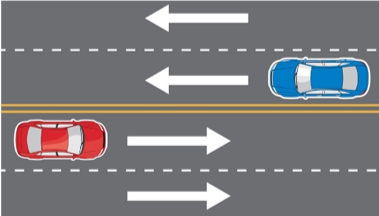
On-Ramps and Merging Lanes:
- Increase speed to match highway traffic and merge safely using signals.
Off-Ramps and Merging Lanes:
- Reduce speed gradually and prepare to stop at the bottom of the ramp.
- Increasing speed is illegal and dangerous.
Avoid Crossing Double Yellow Lines:
- Crossing double yellow lines is generally dangerous and illegal.
Remember, safe driving requires constant attention, following traffic rules, and adapting to road conditions.
